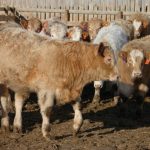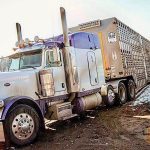
Feeder co-ops still play an important role
Associations provide producers with affordable financing, decades after the system was established

What makes the difference during calf transportation?
Is it the trucking itself, or are there other factors that affect the health and well-being of calves?

Bovine respiratory disease events may have a long-lasting effect
Early cases of bacterial infection could affect performance of replacement heifers

Processing cattle with artificial intelligence
Machine learning is now part of high-tech livestock handling equipment

Many management benefits from weighing cattle
The old adage that you can’t manage what you can’t measure applies in all stages of livestock production

Tracking animal performance with camera clicks
New technology coming to Canada will help livestock producers manage what they can measure

Sustainability closely linked to beef marketing
Consumers do want to know how beef is produced and who's producing it

Vaccination one tool to curb ‘summer pneumonia’ in calves
It’s important to keep calf immunity strong from birth to weaning

Quality, uniformity needs to be planned when breeding cattle
A willy-nilly approach to breeding will produce willy-nilly results

Mixing it up — benefits of crossbred bulls
Hybrid bulls are a good way to achieve several improved performance parameters

